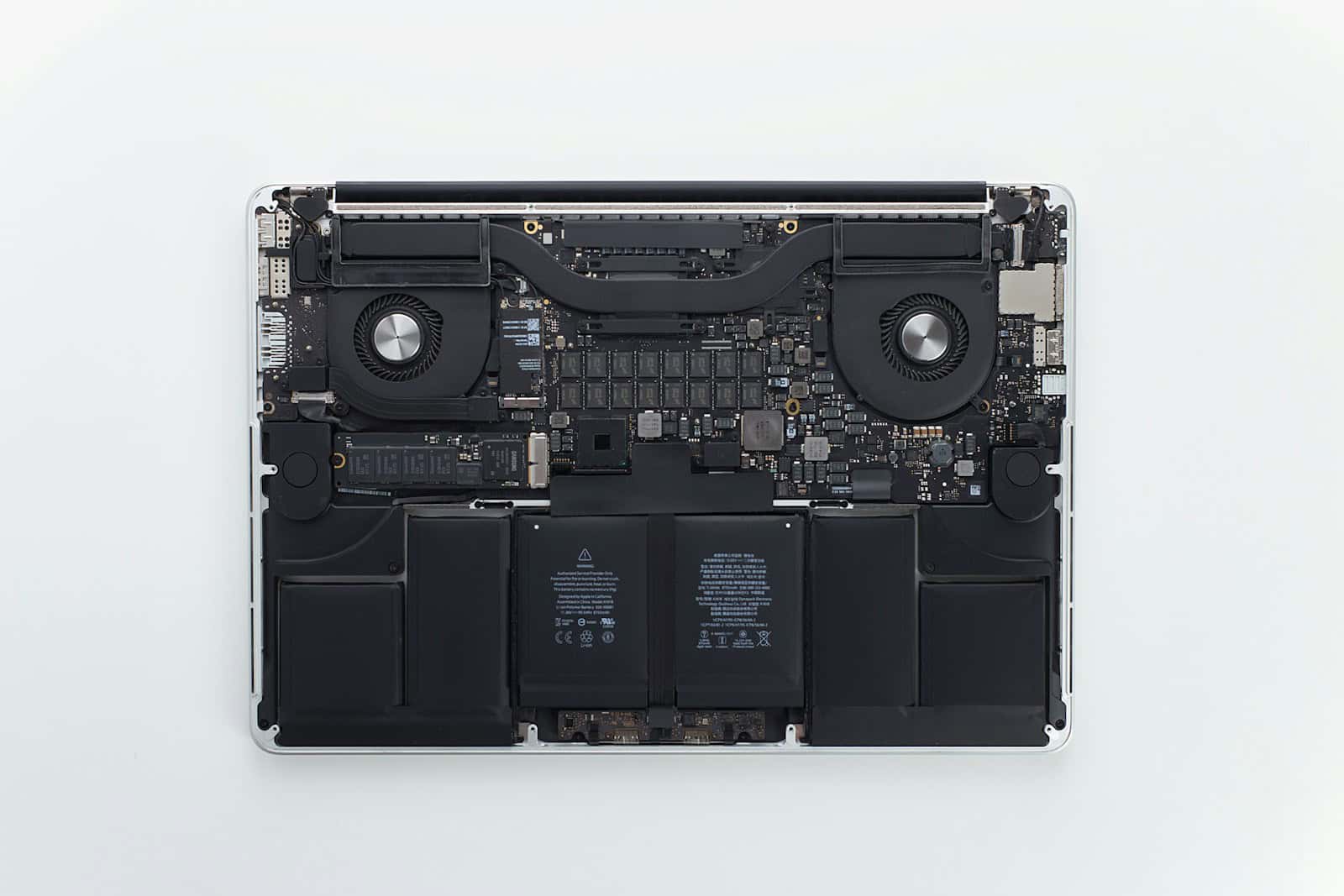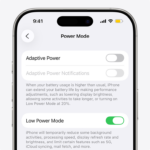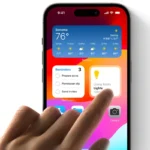Is your MacBook taking forever to hold a charge? You might be wondering if it’s time for a new battery. This is a common question for laptop owners who notice their device isn’t lasting as long as it used to. Apple considers a MacBook battery worn out after 1000 cycles, which typically happens after about 5 years of regular use.
Not sure if your battery needs replacing? Watch for key signs like sudden shutdowns, overheating, or not having enough working time when unplugged. Your MacBook might also show a “Service Battery” warning in the battery menu. These hints tell you it’s probably time for a replacement before your laptop becomes unreliable.
The main thing to remember is that battery replacement should happen when your MacBook no longer gives you enough unplugged time to meet your needs. Don’t just look at the battery health percentage – think about how the battery performance affects your daily use. If you’re constantly searching for outlets or your MacBook shuts down unexpectedly, it’s likely time for a new battery.
Why Battery Health Matters
Your MacBook’s battery is designed to last hundreds of charge cycles — typically around 1,000 cycles for most modern MacBooks. Over time, chemical aging reduces its capacity, meaning your laptop won’t hold a charge as long or perform as efficiently.
Knowing when to replace your battery can help you avoid sudden shutdowns, overheating, or even swelling that can damage your device.
⚠️ Key Warning Signs It’s Time for a Replacement
1. Battery Health Status Shows “Service Recommended”
Check your battery’s condition:
- Go to Apple Menu → System Settings → Battery → Battery Health.
- If it says “Service Recommended”, Apple’s diagnostics have detected significant wear or performance issues.
(source: Apple Support)
2. Rapid Battery Drain
If your MacBook’s battery percentage drops quickly — even with light use — it’s a sign that the battery cells have degraded. You might also notice it dying suddenly at 20–30% charge.
3. MacBook Feels Hot or the Fan Runs Constantly
An aging battery can cause your MacBook to overheat or trigger the fan more often. This happens because the system compensates for inconsistent power delivery from the battery.
(source: iFixit)
4. Swollen or Bulging Battery
If your trackpad feels stiff, the bottom case bulges, or you notice the chassis separating — stop using your MacBook immediately. A swollen battery is a safety hazard and needs professional replacement.
5. Cycle Count Is Near or Above the Limit
Each MacBook battery has a limited number of charge cycles before it’s considered worn out.
To check:
- Click Apple Menu → About This Mac → System Report → Power.
- Look for Cycle Count and Condition.
If the count is close to 1,000 (for most models) or the condition says “Replace Soon”, it’s time to consider a new battery.
(source: How-To Geek)
6. Unexpected Shutdowns or Power Issues
If your MacBook shuts down even when it shows remaining charge, or it only powers on when plugged in, your battery may no longer hold a stable charge.
7. Slow Performance (Even When Plugged In)
macOS may throttle performance to prevent instability from a failing battery. If your laptop feels sluggish despite being connected to power, your battery could be the culprit.
🔧 What to Do Next
Option 1: Check Warranty or AppleCare+
If your MacBook is still under warranty or AppleCare+, Apple may replace the battery for free or at a reduced cost.
Option 2: Visit an Apple Authorized Service Provider
Apple or certified repair shops can safely replace your battery and ensure it’s properly calibrated.
Option 3: DIY Replacement (Advanced Users Only)
If you’re comfortable with repairs, you can use iFixit’s detailed guides and genuine parts kits to replace the battery yourself.
(source: Macworld)
🪫 Pro Tips to Extend Battery Life
- Keep your MacBook between 20–80% charge when possible.
- Avoid extreme heat or cold.
- Enable Battery Health Management in macOS.
- Unplug when fully charged if you’re using it plugged in for long periods.
✅ In Summary
| Sign | What It Means | Action |
|---|---|---|
| “Service Recommended” in Battery Health | Battery wear detected | Schedule replacement |
| Rapid drain or sudden shutdowns | Capacity loss | Replace soon |
| Cycle count near 1,000 | Battery at end of life | Replace |
| Swelling or bulging | Safety hazard | Stop using and replace immediately |
Bottom line:
If your MacBook battery drains quickly, shows a “Service Recommended” message, or has a high cycle count, it’s time to replace it. Regularly checking your battery health helps keep your Mac running safely and efficiently.
Key Takeaways
- Replace your MacBook battery when it reaches 1000 cycles or when battery life no longer meets your needs.
- Watch for warning signs like unexpected shutdowns, overheating, or “Service Battery” notifications.
- Battery replacement can extend your MacBook’s life for years without needing to buy a new computer.
Recognizing MacBook Battery Issues
Your MacBook battery gives warning signs before it needs replacement. Looking for these signals and checking your battery’s health regularly can save you from unexpected shutdowns and performance problems.
Common Signs of Battery Failure
One clear sign you need a new battery is when your MacBook doesn’t have enough working time when unplugged. If your laptop once lasted all day but now dies after an hour or two, your battery is failing.
Sudden shutdowns are another warning sign. Your MacBook might turn off even when showing battery percentage remaining.
A swollen battery is serious and dangerous. If your MacBook’s case bulges or the trackpad doesn’t click properly, stop using it immediately.
The “Service Battery” or “Replace Soon” warning in your menu bar is Apple’s direct way of telling you action is needed. This appears after your MacBook runs internal tests.
Slow performance while on battery power can also indicate problems. Your MacBook might reduce speed to extend battery life when the battery weakens.
Checking Battery Health
You can easily check your battery health through macOS. Click the Apple menu, select “System Settings” (or “System Preferences” in older versions), then choose “Battery.”
For more detailed information, hold the Option key and click the battery icon in the menu bar. Look for one of these conditions:
- Normal: Battery is working properly
- Replace Soon: Battery functions but holds less charge
- Replace Now: Battery significantly degraded
- Service Recommended: Battery needs professional attention
Check the cycle count by clicking “System Information” in the Apple menu, then selecting “Power.” Lithium-ion batteries in MacBooks typically last 500-1000 cycles depending on your model.
Battery health percentage matters too. If it’s below 80%, your battery holds significantly less charge than when new.
Third-party apps like coconutBattery can provide even more detailed information about your battery’s original capacity versus current capacity.
Understanding MacBook Battery Lifespan
MacBook batteries have specific lifespans affected by usage patterns and environmental factors. Apple designs these batteries to maintain performance for several years under normal conditions, but they naturally degrade over time.
Factors Affecting Battery Longevity
Temperature plays a crucial role in battery health. MacBooks work best between 62°F and 72°F (16°C-22°C). Extremely hot or cold environments can permanently damage the battery.
Charging habits also matter. Keeping your MacBook plugged in at 100% constantly isn’t ideal. Apple’s modern MacBooks include optimized battery charging to reduce battery aging.
Background processes drain battery life unnecessarily. Check Activity Monitor to identify power-hungry apps. Reducing screen brightness and turning off keyboard backlighting when not needed helps preserve battery health.
Storage conditions affect unused MacBooks too. Store your device with about 50% charge in a cool, dry place if you won’t use it for weeks.
Average Lifespan of MacBook Batteries
Most MacBook batteries (MacBook Pro, MacBook Air, and standard MacBook) are designed to retain about 80% of their original capacity after 1,000 charge cycles. This typically translates to 3-5 years of regular use.
Older MacBook models (pre-2009) used different battery technology with around 300 cycle lifespans. Newer models use improved lithium-ion batteries with longer lifespans.
Battery capacity decreases gradually, not suddenly. Users might notice:
- Shorter runtime between charges
- Faster battery percentage drops
- Need to charge more frequently
Apple includes battery replacement in their one-year warranty if the battery fails to hold 80% of its original capacity.
Battery Cycle Count Explained
A cycle count represents one complete discharge and recharge of your MacBook’s battery. This doesn’t mean draining from 100% to 0% in one sitting.
For example, using 50% of your battery one day and another 50% the next day counts as one full cycle, not two. This gradual counting method more accurately reflects real-world usage patterns.
You can check your MacBook’s cycle count by:
- Clicking the Apple menu
- Selecting “About This Mac”
- Clicking “System Report”
- Selecting “Power” from the sidebar
Many users find their batteries need replacement after 500-1000 cycles, though this varies based on usage. Battery health ultimately depends on a combination of cycle count, age, and how the device has been used.
Options for MacBook Battery Replacement
When your MacBook battery needs replacement, you have several choices ranging from official services to do-it-yourself solutions. Each option offers different benefits in terms of cost, warranty protection, and convenience.
Official Apple Service
Taking your MacBook to an Apple Store provides the most reliable battery replacement experience. Apple uses genuine parts and follows strict quality standards. The service typically costs $129-$199 depending on your MacBook model.
Apple technicians run diagnostics before replacement to confirm battery issues. This helps avoid unnecessary repairs and identifies any other problems.
The replacement comes with a 90-day warranty on the battery work. For MacBooks still under AppleCare+, battery replacements may be covered if your battery holds less than 80% of its original capacity.
Wait times can vary from same-day service to several days, depending on part availability and store workload. Making an appointment through the Apple website or app is recommended to reduce wait times.
Authorized Apple Service Providers
Apple Authorized Service Providers (AASPs) offer an alternative to Apple Stores while maintaining official standards. These businesses are certified by Apple to perform repairs using genuine parts.
Pricing at AASPs is typically similar to Apple Store pricing, but some may charge less or offer promotions. The warranty coverage matches Apple’s official service – 90 days on the repair work.
AASPs may have more flexible scheduling and shorter wait times than Apple Stores. This makes them convenient if you don’t live near an Apple Store or need quicker service.
Many AASPs can be found in electronics retailers like Best Buy or independent repair shops that have earned Apple certification. Apple’s website has a locator tool to find authorized providers in your area.
Third-Party Repair Shops
Independent repair shops often provide battery replacements at lower costs than official options. Prices typically range from $60-$130 depending on your MacBook model and the quality of the replacement battery.
These shops vary in quality and experience. Look for those with:
- Positive reviews online
- Technicians with Apple certification
- Clear warranty policies
- Transparent pricing
Many third-party shops offer faster turnaround times, sometimes completing repairs while you wait. Some even provide pickup and delivery services.
The main drawback is the potential use of non-genuine batteries, which might affect performance or lifespan. Ask about battery origin before choosing this option. Quality third-party shops will disclose whether they use genuine, OEM, or aftermarket parts.
DIY Replacement with iFixit Guides
For the technically inclined, DIY battery replacement can save money. iFixit sells battery kits for most MacBook models ranging from $50-$120, including tools and detailed guides.
The process difficulty varies greatly by model:
- Pre-2012 MacBooks: Relatively easy with removable bottom panels
- 2012-2015 models: Moderate difficulty, requiring careful adhesive removal
- 2016+ models: Very challenging with glued components and delicate cables
Important safety tips for DIY repairs:
- Discharge the battery below 25% before removal
- Work on a static-free surface
- Disconnect the battery connector first
- Take photos during disassembly to help with reassembly
The main risks include damaging internal components or creating safety hazards if done incorrectly. iFixit guides provide step-by-step instructions with difficulty ratings to help you decide if DIY is appropriate for your skill level.
Preventive Measures and Maintenance
Taking care of your MacBook battery doesn’t just extend its life—it saves you money and prevents the hassle of unexpected shutdowns. Good habits can make a big difference in how long your battery performs at its best.
Optimizing Battery Settings
Your MacBook has built-in settings that can help extend battery life. The most important step is to adjust your screen brightness, as keeping it lower uses less power.
Turn on Battery Health Management in System Preferences > Battery > Battery Health. This feature reduces battery aging by monitoring charging patterns.
For MacBook Air and Pro models, enable optimized battery charging. This smart feature learns your daily charging routine and delays charging past 80% when your Mac predicts it will be plugged in for a while.
Use Activity Monitor to check which apps drain your battery fastest. Quit power-hungry applications when running on battery power. Video editing software and games are often big battery drainers.
Also consider using Safari instead of Chrome when on battery, as Apple’s browser is more energy-efficient on MacBooks.
Maintaining Battery Health Regularly
Calibrating your MacBook battery every 2-3 months helps maintain accuracy. To calibrate:
- Charge your MacBook to 100%
- Leave it plugged in for at least 2 hours
- Disconnect and use until battery is low
- Let it sleep/hibernate when warning appears
- Charge to 100% without interruption
Keep your MacBook’s vents clear to prevent overheating. Heat is extremely damaging to lithium-ion batteries found in all MacBook models.
Update macOS regularly as Apple often includes power management improvements in updates.
Check battery health in System Information. Go to Apple menu > About This Mac > System Report > Power. Look at “Cycle Count” and “Condition.” Most MacBooks are rated for 1,000 charge cycles before reaching 80% capacity.
Best Charging Practices
Avoid keeping your MacBook Pro or Air plugged in at 100% for days. While modern MacBooks have protection circuits, lithium-ion batteries last longer when kept between 20% and 80% charged.
Using the correct power adapter is crucial. Always use Apple’s original charger or certified alternatives. Cheap third-party chargers can damage batteries and may charge inefficiently.
Don’t let your MacBook battery drain completely often. Unlike older battery types, lithium-ion batteries don’t have “memory effect” and actually prefer partial discharges.
Store your MacBook at about 50% charge if you won’t use it for weeks. This prevents stress on the battery that occurs at very high or low charge levels.
Remove the charger once it’s fully charged if you’re not using optimized charging. This helps reduce heat, which can degrade battery capacity over time.
Warranty and Tech Support
Understanding Apple’s warranty coverage and available tech support options can save you time and money when dealing with MacBook battery problems. These resources offer different levels of assistance depending on your specific situation.
AppleCare+ and Battery Coverage
Apple’s standard warranty includes battery replacement for defective batteries during the first year of ownership. This is part of the Apple One Year Limited Warranty that comes with every new MacBook.
For longer protection, AppleCare+ extends coverage significantly beyond the standard warranty. With AppleCare+, battery service is available if your battery holds less than 80% of its original capacity.
The cost of battery replacement varies based on your MacBook model and warranty status. Without coverage, you’ll pay the full service fee for battery replacement.
Key benefits of AppleCare+ include:
- Extended battery coverage
- Priority access to Apple experts
- Global repair coverage
- Potential coverage for accidental damage
Utilizing Apple’s Tech Support Resources
Apple offers multiple ways to get help with battery issues. The Apple Support website provides troubleshooting guides specifically for battery problems.
You can check battery health directly on your MacBook. Look under System Settings > Battery > Battery Health to see current capacity and cycle count. Apple considers batteries worn after about 1000 cycles.
Support options include:
- Online chat: Quick help for basic issues
- Phone support: Detailed troubleshooting with an Apple technician
- Genius Bar: In-person diagnosis at Apple Stores
- Authorized service providers: Local repair options approved by Apple
Leveraging JustAnswer for Expert Advice
JustAnswer provides access to verified experts when you need answers about your MacBook battery but don’t want to visit a store.
These experts go through a Multi-Step Expert Quality Process to ensure they’re qualified to help. You can ask specific questions about your “Service Recommended” notification and get personalized advice.
JustAnswer technicians can help determine if your battery issue is:
- Normal wear requiring replacement
- A software problem fixable without repairs
- A more serious issue affecting other components
The platform works on a question-and-answer basis, making it easy to get quick guidance on whether your situation warrants immediate battery replacement or if you can safely wait.
Cost Considerations for Battery Replacement
Replacing your MacBook battery can cost anywhere from $129 to $500+ depending on several factors. The price varies based on your Mac model and where you get the service done.
Apple’s official battery replacement costs range between $129-$199 for most models. For newer MacBooks, prices can be higher due to integrated components.
If you have AppleCare+, battery replacement might be free if your battery holds less than 80% of its original capacity. This coverage can save you hundreds of dollars on repair costs.
Third-party repair shops often charge less than Apple, with prices typically ranging from $50 to $200. The quality and warranty may vary between shops.
For MacBook Pro models, especially those with Touch Bar, expect to pay more. Some users report costs around $250 for 2018 models.
In India, MacBook battery replacement costs between ₹2,999 and ₹9,449, showing how prices can differ by region.
Comparing Battery Replacement Options:
| Service Provider | Price Range | Pros | Cons |
|---|---|---|---|
| Apple Store | $129-$500+ | Genuine parts, expert service | Most expensive option |
| Authorized Service | $129-$400 | Maintains warranty | May have wait times |
| Independent Shops | $50-$200 | Lower cost, faster service | Variable quality |
| DIY Kits | $40-$90 | Cheapest option | Risk of damage, voids warranty |
When weighing costs against buying a new Mac, remember that a $200 battery replacement is much cheaper than a $1,200+ new laptop.
Frequently Asked Questions
MacBook batteries need replacement when they show key signs of wear. Below are answers to common questions about battery health, costs, and timing.
How can I tell if my MacBook battery needs to be replaced?
Several signs indicate your MacBook battery needs replacement. Unexpected shutdowns are a clear warning sign – your laptop may turn itself off sooner than expected if the battery is failing.
Check the battery health in System Settings. Look for the “Service Recommended” warning or if maximum capacity falls below 80%.
Overheating during normal use or a battery that bulges are serious signs that need immediate attention.
What is the expected lifespan of a MacBook battery before replacement is necessary?
Most MacBook batteries last 3-5 years with normal use. Apple uses high-quality batteries that can function well for 5+ years before needing replacement.
The actual lifespan depends on your usage patterns. Heavy users who frequently drain the battery completely may need a replacement sooner than light users.
Temperature also affects battery life. Constant exposure to high heat will shorten battery lifespan.
Is it more cost-effective to replace a MacBook battery or purchase a new MacBook?
Battery replacement is much more cost-effective than buying a new MacBook. A new battery costs $129-$199, while a new MacBook starts around $999.
If your MacBook is less than 5-7 years old and works well otherwise, battery replacement makes financial sense. The computer will likely serve you well for several more years.
For MacBooks over 8 years old, consider the overall condition. If it has other issues or feels slow, a new MacBook might be the better long-term choice.
What is the typical cost for a MacBook battery replacement?
Apple’s official battery replacement service costs $129-$199 depending on your MacBook model. This includes parts and labor when done at an Apple Store or authorized service provider.
Third-party repair shops might charge less, typically $80-$150. While this saves money, it may void any remaining warranty.
If you’re comfortable with DIY repairs, battery kits cost $50-$100, but this approach risks damage to your MacBook.
At what service battery cycle count is it recommended to replace a MacBook battery?
Apple considers a MacBook battery ready for replacement after 1000 charge cycles. A cycle count means using 100% of the battery’s capacity, not necessarily a single charge.
You can check your cycle count by clicking the Apple menu, selecting “About This Mac,” then “System Report,” and “Power.” The number appears under “Cycle Count.”
Many users find their battery performance declines noticeably around 800-900 cycles, so consider replacement when approaching this range.
How long should a MacBook battery maintain a charge before considering replacement?
A healthy MacBook battery should last 8-10 hours of normal use when new. When battery runtime drops to less than half its original capacity, it’s time to consider replacement.
If you must keep your MacBook plugged in constantly to use it, the battery needs replacement regardless of other metrics.
Remember that heavy tasks like video editing or gaming will drain the battery faster than web browsing or document editing.







